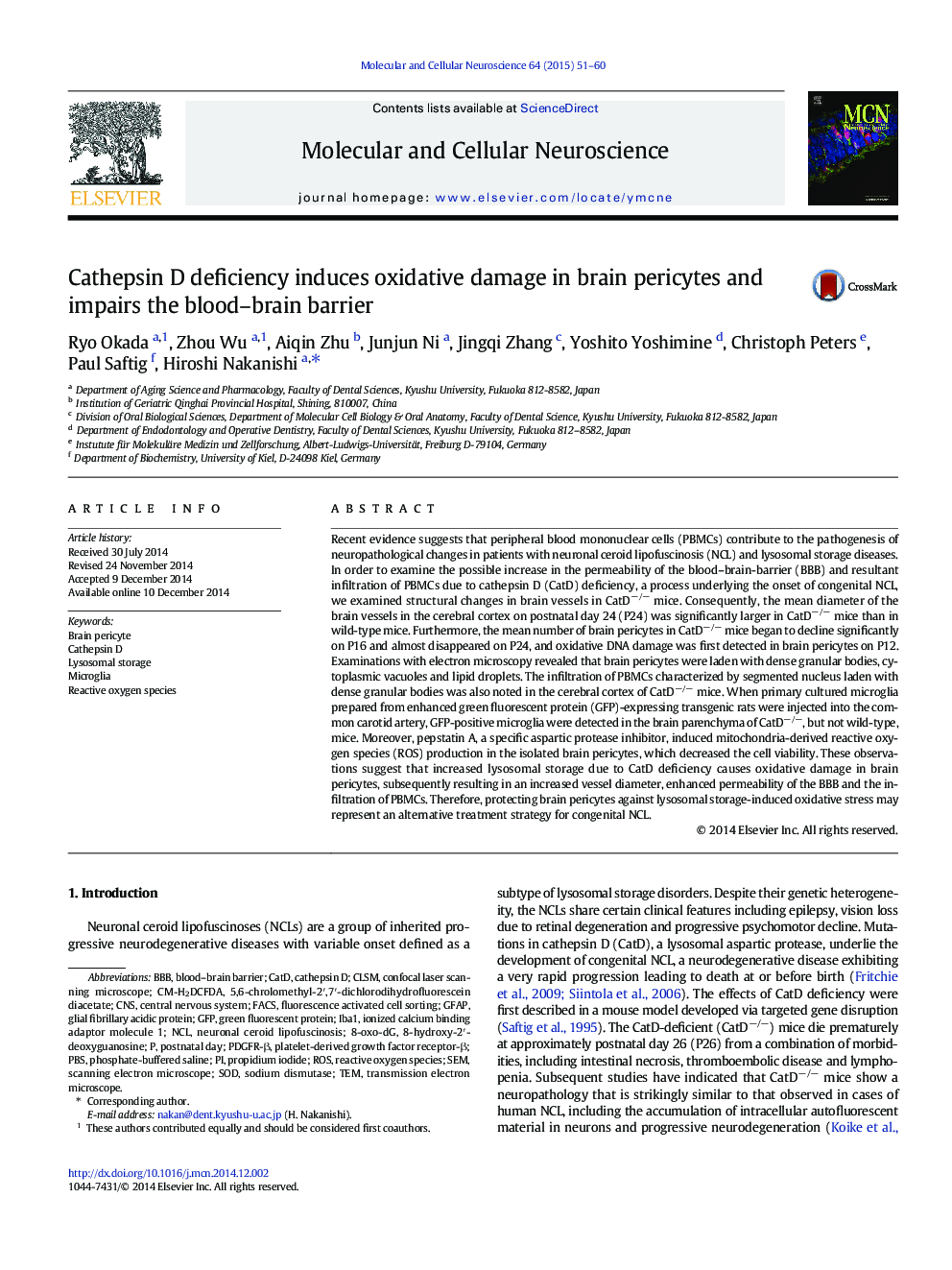| کد مقاله | کد نشریه | سال انتشار | مقاله انگلیسی | نسخه تمام متن |
|---|---|---|---|---|
| 8478591 | 1551141 | 2015 | 10 صفحه PDF | دانلود رایگان |
عنوان انگلیسی مقاله ISI
Cathepsin D deficiency induces oxidative damage in brain pericytes and impairs the blood-brain barrier
دانلود مقاله + سفارش ترجمه
دانلود مقاله ISI انگلیسی
رایگان برای ایرانیان
کلمات کلیدی
موضوعات مرتبط
علوم زیستی و بیوفناوری
بیوشیمی، ژنتیک و زیست شناسی مولکولی
بیولوژی سلول
پیش نمایش صفحه اول مقاله

چکیده انگلیسی
Recent evidence suggests that peripheral blood mononuclear cells (PBMCs) contribute to the pathogenesis of neuropathological changes in patients with neuronal ceroid lipofuscinosis (NCL) and lysosomal storage diseases. In order to examine the possible increase in the permeability of the blood-brain-barrier (BBB) and resultant infiltration of PBMCs due to cathepsin D (CatD) deficiency, a process underlying the onset of congenital NCL, we examined structural changes in brain vessels in CatDâ/â mice. Consequently, the mean diameter of the brain vessels in the cerebral cortex on postnatal day 24 (P24) was significantly larger in CatDâ/â mice than in wild-type mice. Furthermore, the mean number of brain pericytes in CatDâ/â mice began to decline significantly on P16 and almost disappeared on P24, and oxidative DNA damage was first detected in brain pericytes on P12. Examinations with electron microscopy revealed that brain pericytes were laden with dense granular bodies, cytoplasmic vacuoles and lipid droplets. The infiltration of PBMCs characterized by segmented nucleus laden with dense granular bodies was also noted in the cerebral cortex of CatDâ/â mice. When primary cultured microglia prepared from enhanced green fluorescent protein (GFP)-expressing transgenic rats were injected into the common carotid artery, GFP-positive microglia were detected in the brain parenchyma of CatDâ/â, but not wild-type, mice. Moreover, pepstatin A, a specific aspartic protease inhibitor, induced mitochondria-derived reactive oxygen species (ROS) production in the isolated brain pericytes, which decreased the cell viability. These observations suggest that increased lysosomal storage due to CatD deficiency causes oxidative damage in brain pericytes, subsequently resulting in an increased vessel diameter, enhanced permeability of the BBB and the infiltration of PBMCs. Therefore, protecting brain pericytes against lysosomal storage-induced oxidative stress may represent an alternative treatment strategy for congenital NCL.
ناشر
Database: Elsevier - ScienceDirect (ساینس دایرکت)
Journal: Molecular and Cellular Neuroscience - Volume 64, January 2015, Pages 51-60
Journal: Molecular and Cellular Neuroscience - Volume 64, January 2015, Pages 51-60
نویسندگان
Ryo Okada, Zhou Wu, Aiqin Zhu, Junjun Ni, Jingqi Zhang, Yoshito Yoshimine, Christoph Peters, Paul Saftig, Hiroshi Nakanishi,